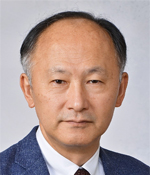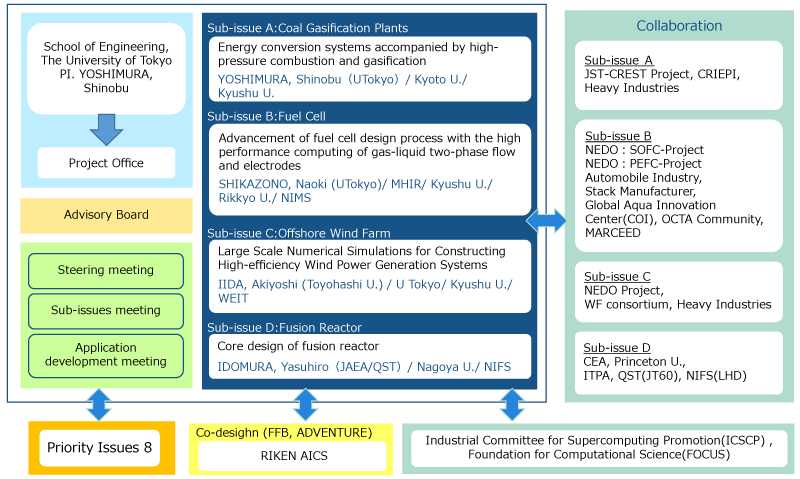Yoshimura Laboratory
Department of Systems Innovation, School of Engineering, The University of Tokyo
Priority Issue 06 Project
PROJECT
Message

PI. YOSHIMURA, Shinobu
Professor, School of Engineering, The University of Tokyo
Any source of energy that is superior in all aspects—cost, environmental impact, safety, and use of natural resources—does not exist. Therefore we need to develop a number of multiple revolutionary clean energy systems. Using the post-K computer, we will develop a method to conduct many simulations to assess various large-scale phenomena energy systems. These simulations will accelerate development of carbon-free coal gasification plants, low-cost, long-lasting fuel cells, large-scale wind power plants farm floating on the sea seashore, and nuclear fusion power plants.
Sub-issues
Sub-issue A: Coal Gasification Plants
- Energy conversion systems accompanied by high-pressure combustion and gasification
- Outline:
- Advancement of full-scale simulations of combustion, gasification, particle traces and ash solutions, i.e., solid-gas-liquid three-phase phenomena under actual pressure conditions
- Highly accurate simulations of nonlinear and damage phenomena under transient and nonlinear extreme environments.
- Multi-scale and multi-physics transient and nonlinear simulations of entire system of reaction-structure and cooling phenomena.
Sub-issue B: Fuel Cell
- Advancement of fuel cell design process with the high performance computing of gas-liquid two-phase flow and electrodes.
- Outline:
Design guidelines for overcoming issues regarding TPB, cell and stack designs by introducing numerical simulation tools that can deal with microscopic, mesoscopic and macroscopic phenomena.
Gas-liquid two-phase flow simulation- Two-phase flow inside cell stacks
- Improved two-phase flow modeling and implementation in total simulator
PEFC/SOFC electrode simulation - Electrode degradation and fabrication process
- Overpotential prediction
PEFC membrane electrode assembly simulation - Electrolyte and TPB structure modeling and analysis
- Detailed evaluation of macroscopic model parameters
Sub-issue C: Offshore Wind Farm
- Large Scale Numerical Simulations for Constructing High-efficiency Wind Power Generation Systems
- Outline:
Simulation of Wind farm
- Large-scale flow simulation taking into account weather and terrain
- Coupled analysis of flow and vibration taking into account multiscale phenomena in time and space domains, including atmospheric flow, wind-turbine wake, and turbine-blade boundary layer
- Evaluation and optimization of wind-farm performance considering interference by wind-turbine wake
- Improvement in wind-turbine performance using advanced fluid control technology
Safety and reliability analysis - Life cycle evaluation and reliability improvements for wind turbine blades using fluid-structure interaction analysis
Sub-issue D: Fusion Reactor
- Core design of fusion reactor
- Outline:
Burning plasma analysis code
- Turbulent transport of D, T, He, …
- Confinement of α particles
- Exascale computing techniques
Validation on large fusion devices - Validation against JT-60, LHD
- ITER physics study in ITPA (International Tokamak Physics Activity)
Participating organizations
Kyoto University, Kyushu University, Nagoya University, Rikkyo University, Toyohashi University of Technology, Japan Atomic Energy Agency (JAEA), National Institute for Materials Science (NIMS), National Institutes of Natural Sciences (NINS), Mizuho Information & Research Institute, Inc., Wind Energy Institute of Tokyo, Inc.
Organization

